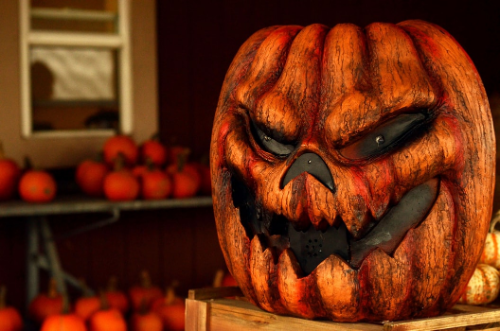Halloween is a very special holiday, in many ways unlike any other holiday. It's criticized, it's not accepted, it's even proposed to be banned somewhere. And against this backdrop, the popularity of Halloween is growing and spreading to other countries, as it takes root there at an alarming rate.
History of the holiday
But have you ever wondered about the origin of the holiday? How did its name come about? What exactly is celebrated on this day? Where did the tradition of dressing up as monsters, scaring each other and making sinister pumpkin lanterns come from?
This mysterious holiday originated about two thousand years ago with the ancient Celtic tribes. Halloween combines two traditions - the Celtic custom of worshipping evil spirits and the Christian tradition of singing all saints.
At that time, the Celts living in the territory of modern Great Britain and Northern Ireland divided the year into two parts - summer and winter, and October 31 was considered the last day of the harvest and outgoing day of the year - the "day of late summer".
The New Year's Eve celebrations heralded a change of seasons. It is believed that on this night the inhabitants of the Otherworld visited the world of the living. It was a time when the gates to other worlds were opened. A time of transition from summer to winter, a time when all living things die. The Celts called this night Samain.
In order not to become a victim of otherworldly powers, people performed rituals to comfort the dead. People gathered at a sacrificial fire at night, and dressed in the skins of killed animals, told legends of deceased ancestors.

Halloween and the Middle Ages. The roots of tradition
This tradition was passed on from generation to generation until the local population was subjected to the Christian influence of the Romans. Pagan rites were mixed with the rites of the Christian faith and already in VIII century A.D. the Christian Church, wishing to distract the English people from pagan customs, abolished Siman and invented another holiday - All Saints' Day. This holiday is celebrated on November 1.
Previously All Hallows Even was called Allhallowmas and the festive night from 31 October to 1 November sounded like All Hallows Even or Halloween. That's how the modern name Halloween came into being.
Halloween. These days.
Halloween is still celebrated today in Christian and pagan rites. That night, people wear ghost costumes, vampires, witches, and other evil things and put on masquerades. The main symbol of the holiday is a sacred lantern made of pumpkin, on which a "sinister" smile is carved. Such a pumpkin is also called the Jack-o'-lantern lamp. It is believed that the pumpkin lamp is placed outside the window to scare away evil spirits. Tonight, children dress up as monsters, walk from house to house, beg for sweets from their neighbors and shout, "Trick-or-treat!" The neighbors, in order to pay off the "evil spirits" and not to piss off real evil, treat the children with sweets and various sweets.